Sandy Rendel Architects slots narrow house into Peckham alley
Sandy Rendel Architects, working with Sally Rendel, has built a 2.8-metre-wide skinny home named Slot House in a disused alley in Peckham, south London. Sandy and Sally Rendel designed and built the house to fit in the alley, which was almost the exact size of a London Underground carriage, alongside their own home in Peckham. "The The post Sandy Rendel Architects slots narrow house into Peckham alley appeared first on Dezeen.

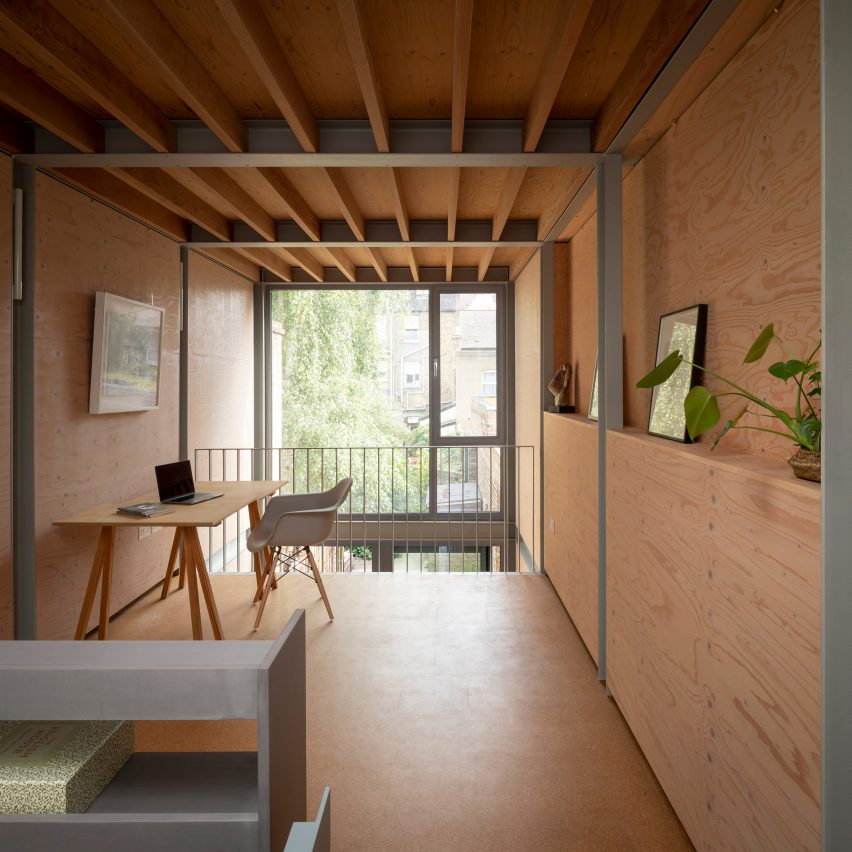
Sandy Rendel Architects, working with Sally Rendel, has built a 2.8-metre-wide skinny home named Slot House in a disused alley in Peckham, south London.
Sandy and Sally Rendel designed and built the house to fit in the alley, which was almost the exact size of a London Underground carriage, alongside their own home in Peckham.
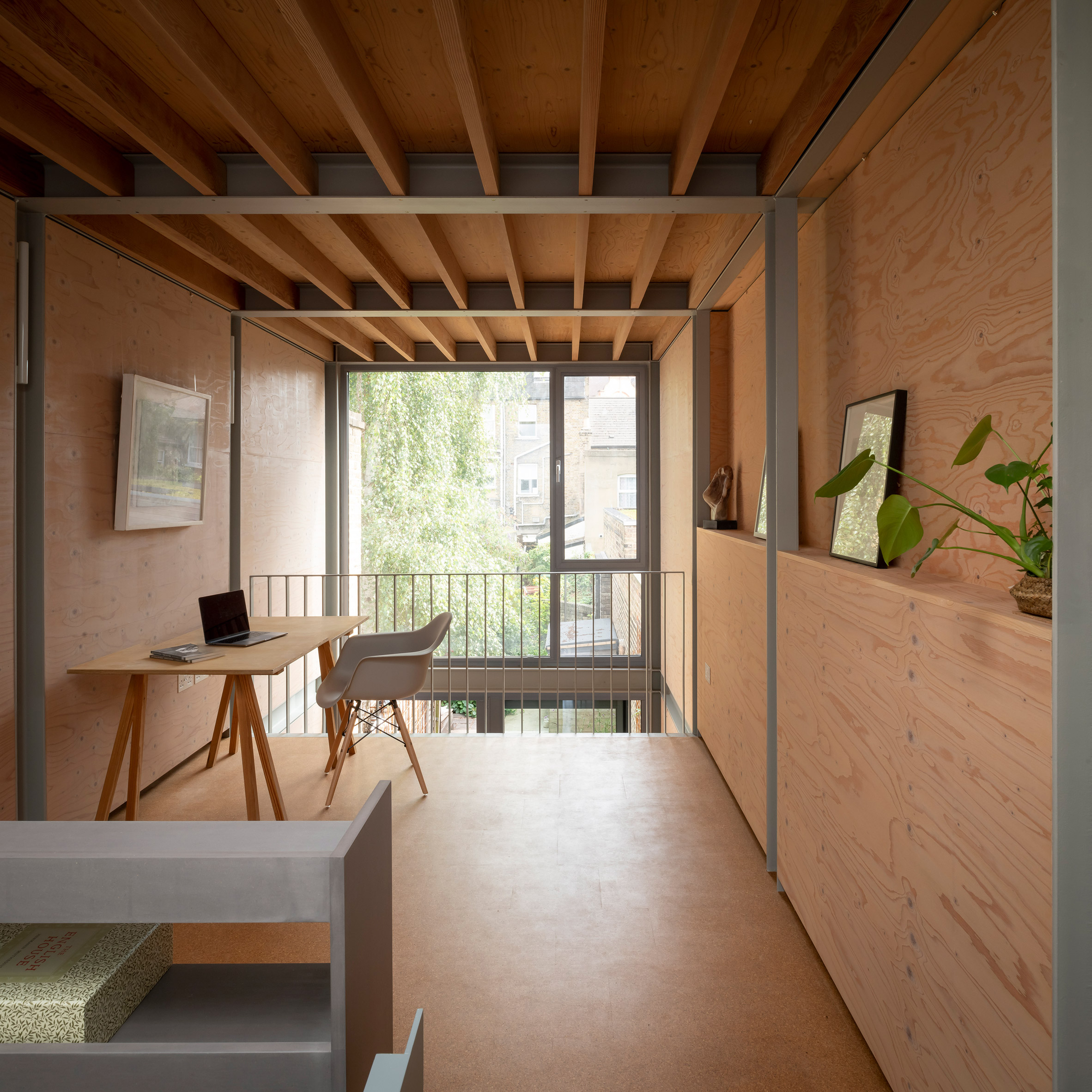
"The major challenge was to tease spaces that were both functional and delightful out of space that is no bigger than a tube carriage," said Sandy Rendel, founder of Sandy Rendel Architects.
"To commit to the investment involved in developing it we wanted to be sure that the house would not simply 'work' but actually be enjoyable to live in," he told Dezeen.
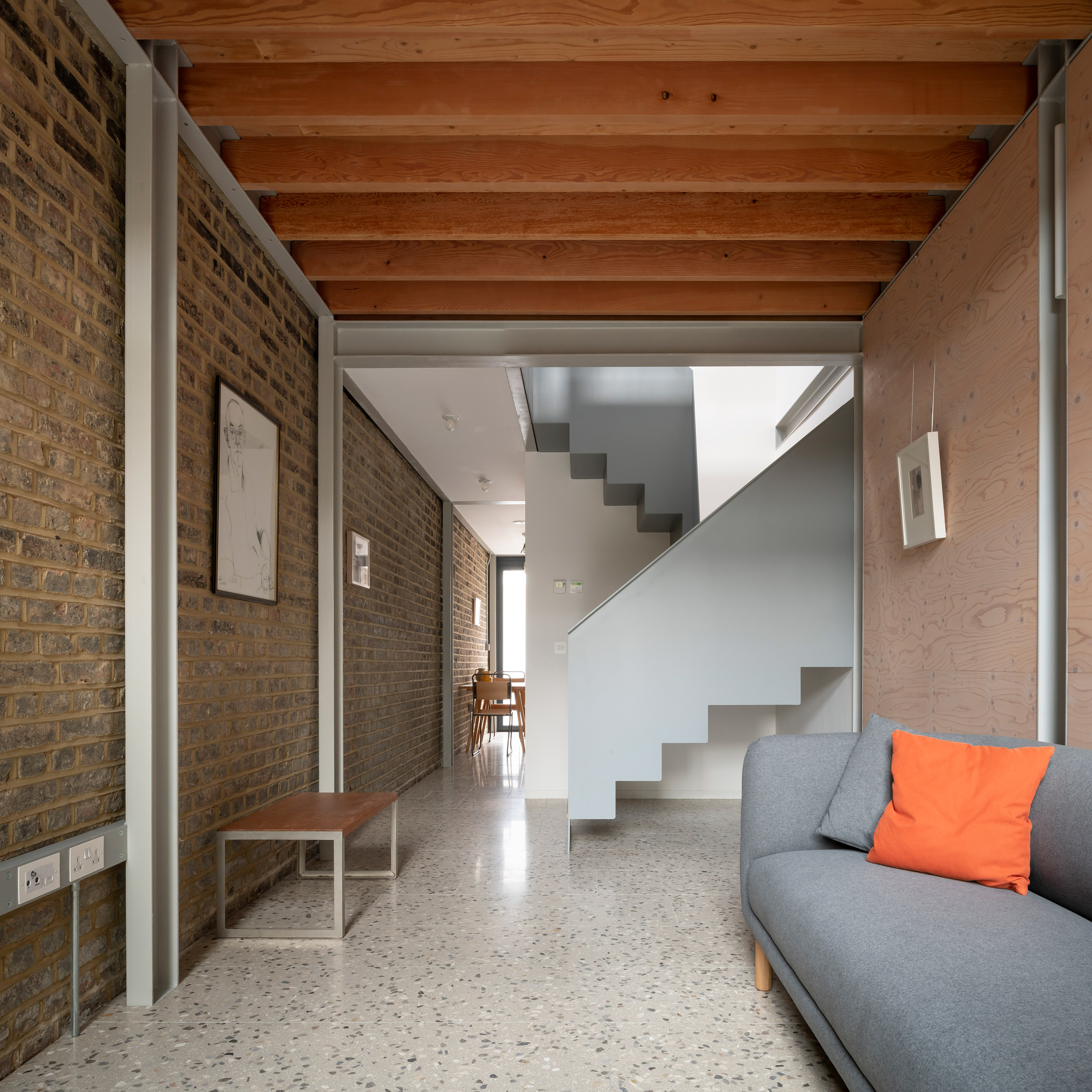
The architects designed the two-storey house to make as efficient a use as possible of the narrow site, while creating a space that would be a bright and pleasant place to live in.
To avoid placing any weight on the neighbouring buildings the house was constructed using a prefabricated, lightweight steel frame, which was expressed internally to maximise the space.
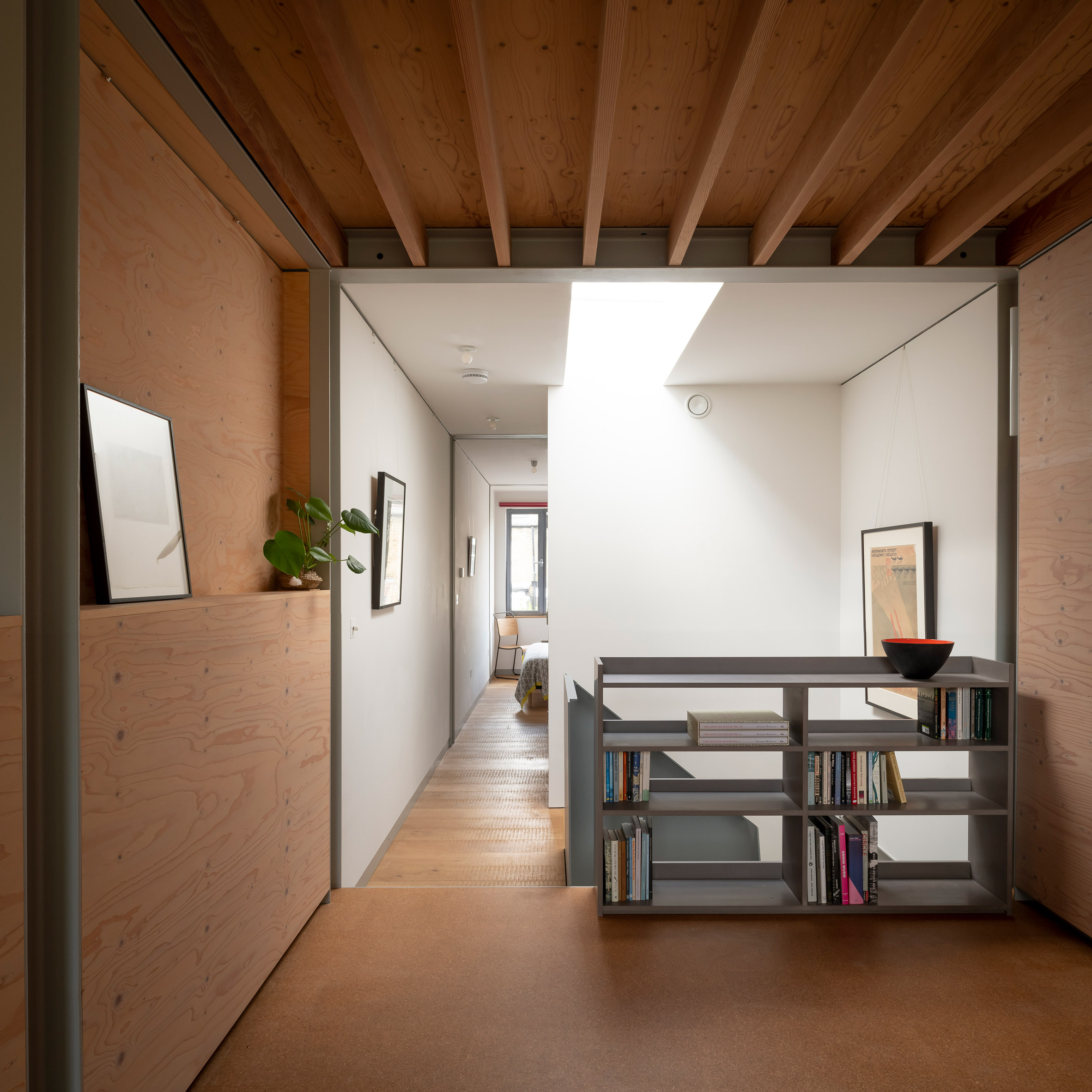
On the ground floor the house's main living spaces are arranged linearly with the front door opening straight into the kitchen, the stairs in the centre and a lounge at the rear of the home. Above, on the first floor, is a master bedroom and a study area.
Light is brought into the house through large windows at the front and rear of the property and a skylight above the stairs.
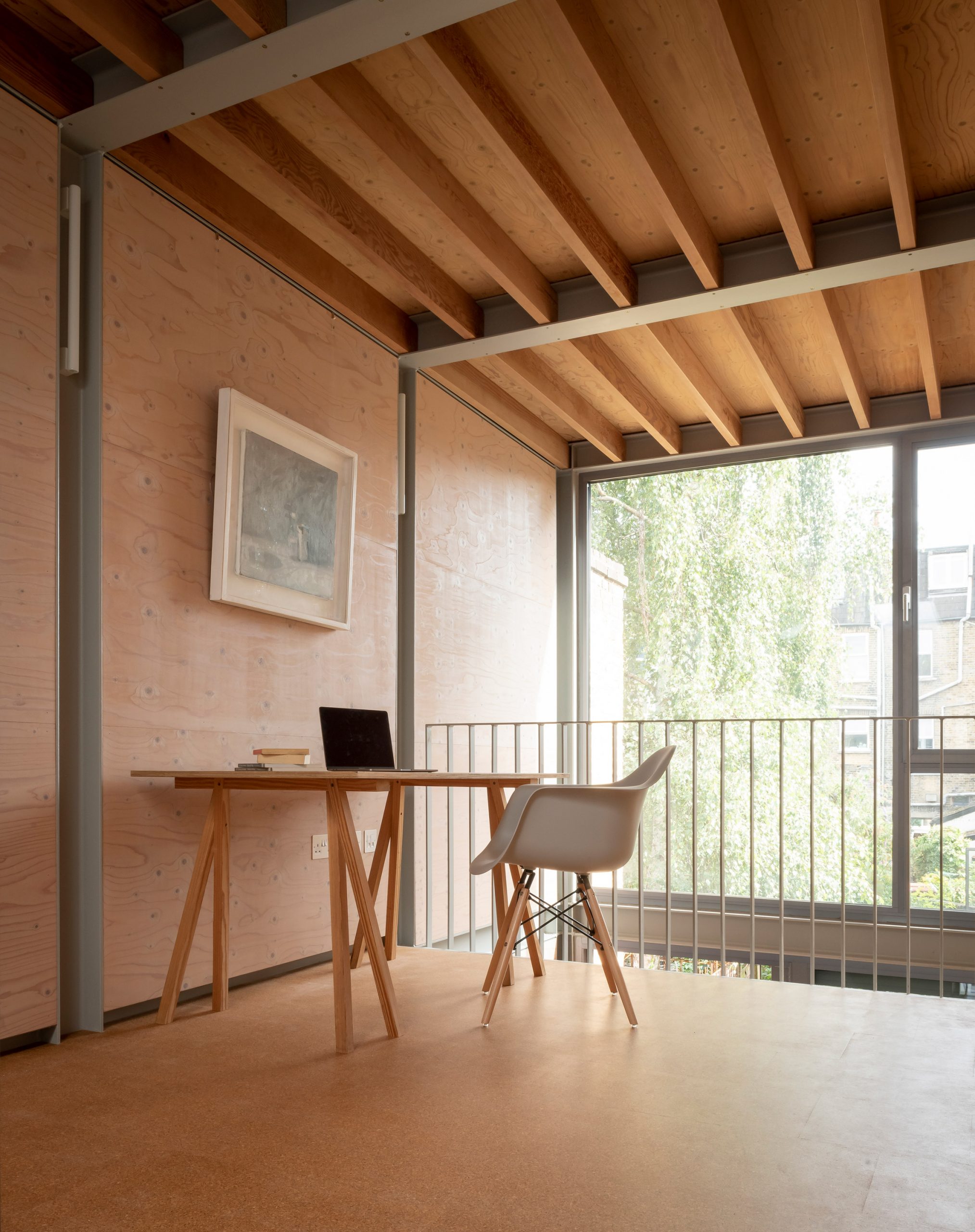
"Bounded by two-storey flank walls on both sides the only opportunity to bring light in was through the narrow front and rear faces and the roof," Sandy Rendel said.
"To maximise the light and increase the sense of space, the layout is as open as possible, even including a small double-height space at the garden end linking the living room to the study mezzanine above."
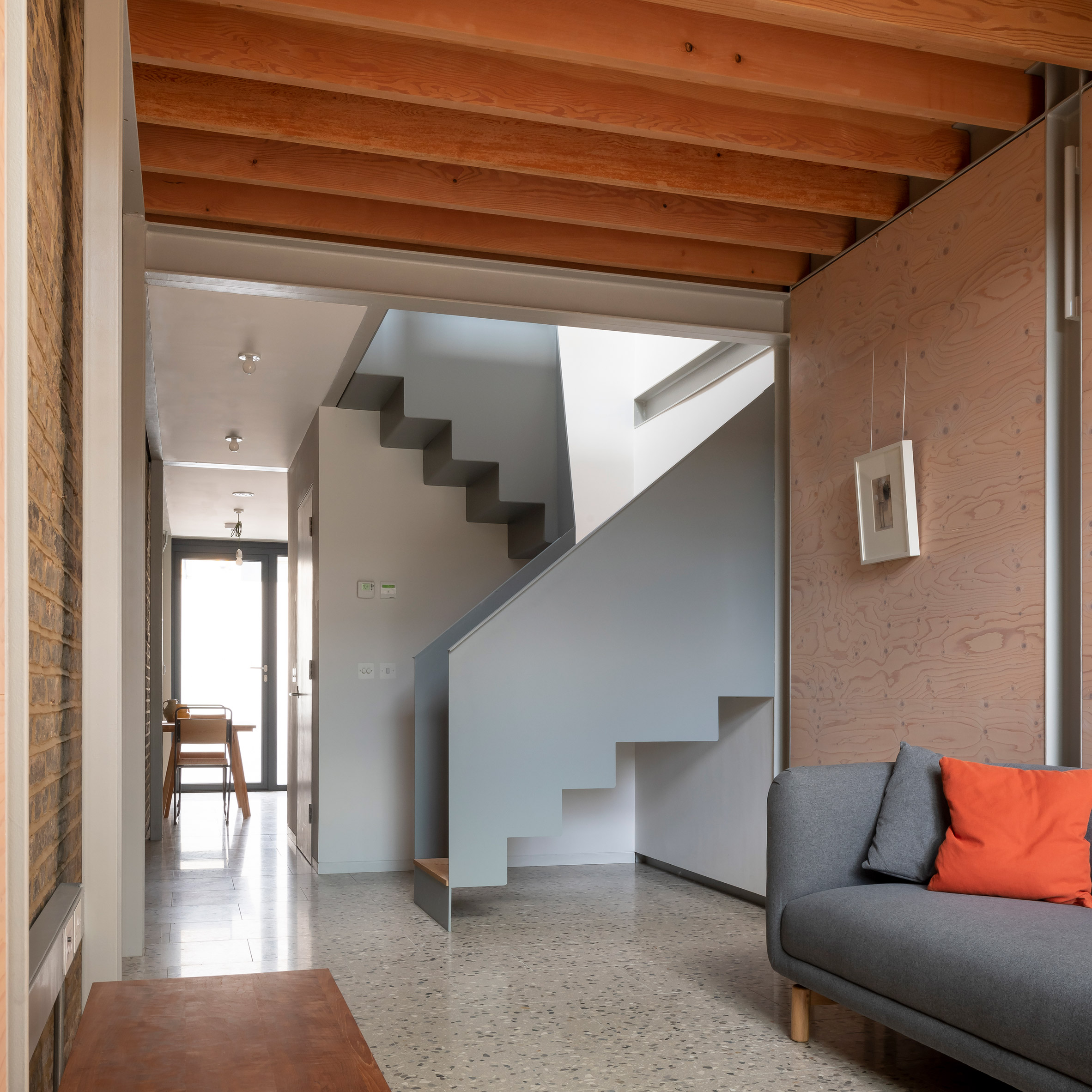
Throughout the house the architects combined the steel structure with exposed Douglas fir joists, spruce plywood walls and cork and terrazzo floors.
"We wanted to use a robust economic palette of materials, but also ones that were able to add some richness to the interior," said Sandy Rendel.
"The form and arrangement of spaces is very simple so the character of the house is largely defined by these materials."
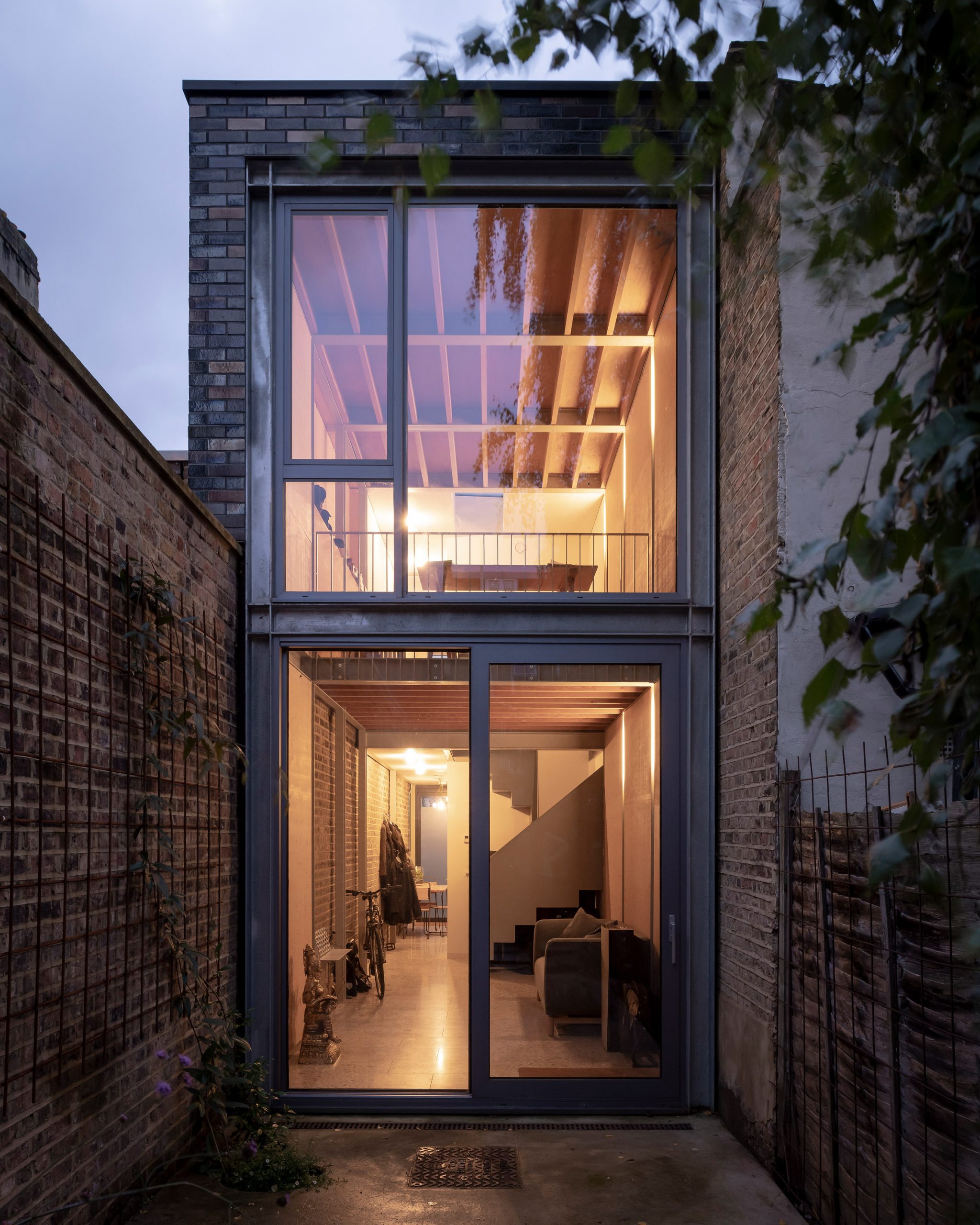
Although the site had planning permission for a three-storey house before Sandy and Sally Rendel purchased it, the architects chose to build a smaller property to create a better place to live.
"Adding another storey, which the original planning permission had consent for, would have impacted on the layout, requiring a much more cellular arrangement because of the more onerous fire regulations imposed on a three-storey house," explained Sandy Rendel.
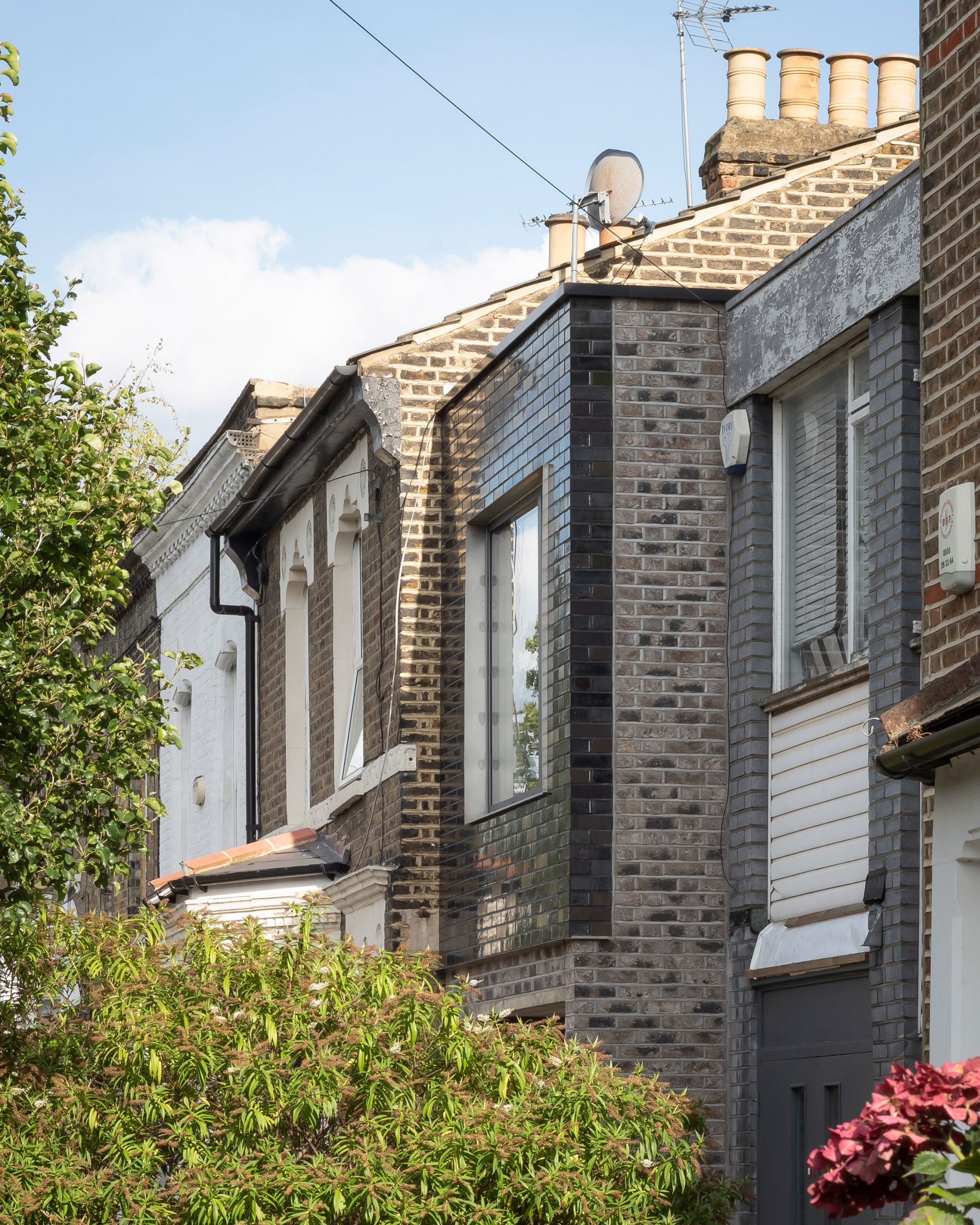
"I think developers would argue against the reduced size that we pursued in pure financial terms, but we felt that ethically the tiny plot had a maximum capacity of two people and should be enjoyed as such," he continued.
"Even without maximising its development potential in terms of pure floor area and whilst targeting a higher quality than standard developer spec, we have still proved that it is financially viable to build on such small, awkward brownfield sites."
London based Sandy Rendel Architects was founded by Sally Rendel 2010. The studio previously completed a riverside house in the south west of England with an upper storey clad entirely in weathering steel mesh.
Photography is by Jim Stephenson.
Project credits:
Architects: Sandy Rendel Architects with Sally Rendel
Structural engineer: Structure Workshop
The post Sandy Rendel Architects slots narrow house into Peckham alley appeared first on Dezeen.
